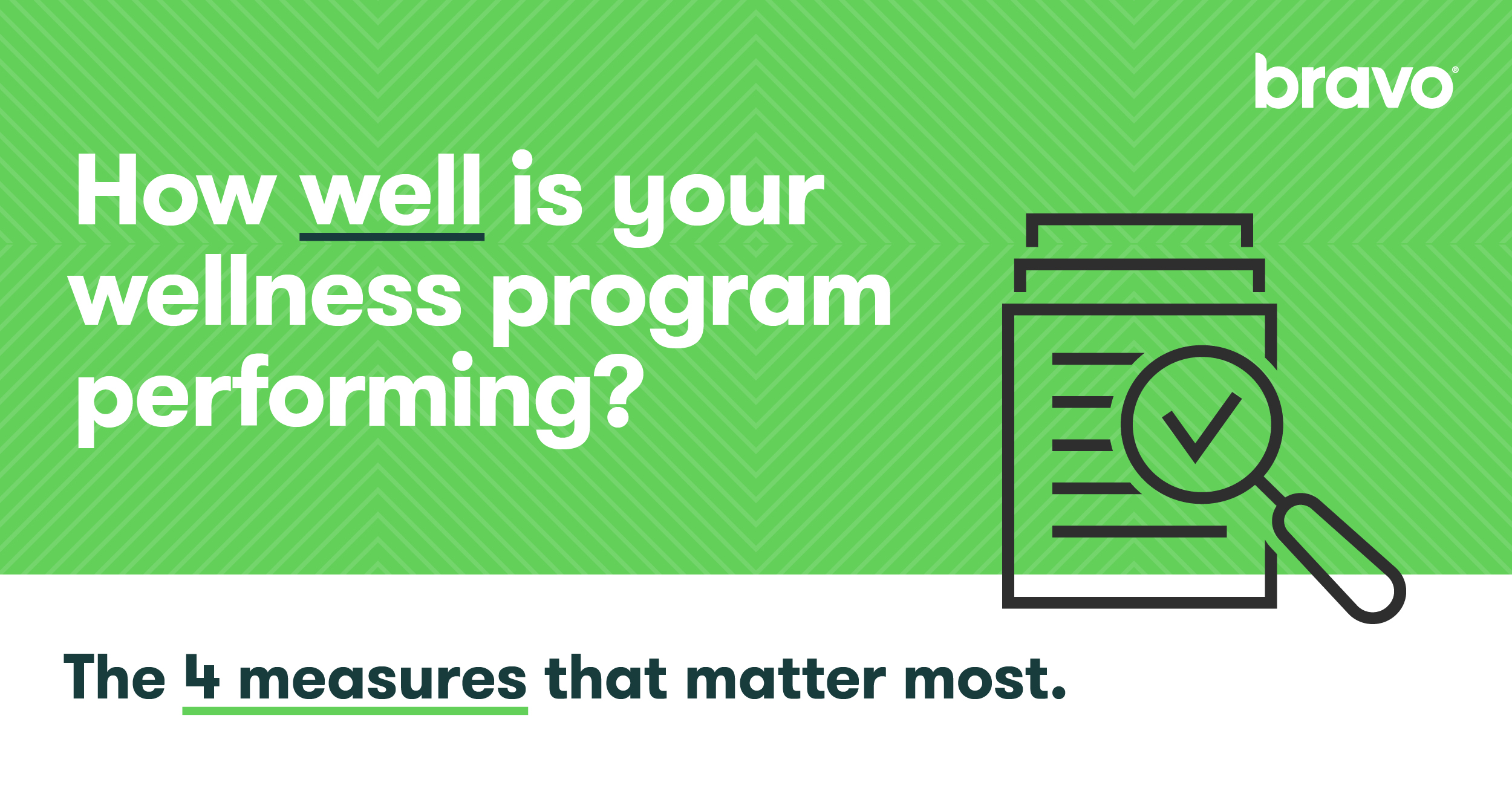Implementing an effective and impactful wellness program is no small task. Managing the needs of your employees requires understanding of the factors that influence their personal lives and work performance.
While facilitating open channels of communication is one way to achieve these goals, implementing statistical analysis and data to maximize health improvement and cost containment is essential.
Learning how to use data to refine the design of your wellness program a critical component to improving the existing structure, but also to continue evolving wellness options for your entire organization.
The Importance of Measuring Wellness Program Performance
Taking the time to regularly evaluate your wellness program is important for a number of reasons. It helps to:
- Build a business case
- Fine-tune and/or renew your efforts
- Determine if the right decision was made
By making efforts to consistently measure program performance and wellness ROI, you help ensure that your investment is applied carefully to improve the health and wellbeing of those within your organization.
This increases the effectivity of the wellness options being offered while also working toward established organizational goals. After all, being able to determine if something “works” in the real world, as opposed to on paper, can be difficult at times.
Using proven data collection techniques to measure your wellness program’s performance allows you to identify influential forces that may be enhancing or deteriorating progress in the “real world,” which can save you valuable time and money in the long term.
Evaluation Approaches: Here’s How You Should Be Evaluating Your Program
Regardless of your organizational approach, there are three broad categories by which you should be evaluating your wellness program: structure, process and outcomes.
The main question you want to answer is, what was the effect of the program?
The answer to this question is typically tied to the program’s objectives with a focus on outcomes being a central tenet to conducting a good evaluation.
Additionally, incorporating a quality evaluation of both structure and process, in conjunction with evaluating outcomes, allows you to see how the program was implemented to better understand what may have led to a positive or negative result. This enables you to create a road map for remedying problems or replicating success throughout the course of evaluation.
If you already have a wellness program in place, is it time to fine-tune it? Or, perhaps you’re ready to implement a wellness program for the first time. We’re here to help. Learn how our team can help your wellness program inspire your employees to achieve their personal best and lower your organizational healthcare costs:
Let’s Design Your Custom Wellness Program
Structure
By definition, this term refers to the inputs or architectural blueprint for the wellness program you are constructing. It is important to remember a few key questions when reviewing this category, including:
- What elements are included?
- What topics are covered?
- Is the leadership supportive of the initiative?
- Is the worksite/environment supportive of the initiative?
- What are the engagement methods?
Fortunately, there are a number of viable tools in the public domain that can help you assess the structure of your program to create the most effective wellness program for your organization. These include:
- The Health Enhancement Research Organization (HERO) Scorecard
- The CDC Worksite Health ScoreCard (HSC)
- The Leading By Example (LBE)
- The Environmental Assessment Tool (EAT)
- The Wellness Impact Scorecard (WISCORE)
Process
This term is defined as a measure of how well the program is implemented as planned. This measure is useful for keeping implementation of the program on track and also for determining if program application met the quality standards to which it initially aspired.
Key questions to consider when reviewing this category include:
- Were the programs implemented as planned?
- Were the programs implemented on schedule?
- What barriers to implementation or participation existed?
- Were those barriers addressed?
- What worked (or didn’t) in communicating the program to employees?
Outcomes
This category is a quantitative analysis of the impact your program had on employee health and healthcare costs. There are four specific types of outcomes data to review in order to identify the effectivity of the program and the overall benefit to both the individual employees and organization as a whole.
Participation Rates
A wellness program is useless without active participants. To find out how well your program is engaging your employees, you’ll want to use leading indicators to make adjustments quickly if you find a dip in participation.
Metrics to consider in this section of outcomes data include:
- Program registration rates
- Screening participation rates
- Health assessment completion
- Coaching and activity enrollment rates
- Participation satisfaction feedback
- Non-participant feedback
Clinical Outcomes
A clinical outcome is central to the purpose of the program itself. It identifies how the program is impacting both behavioral change and lifestyle/health improvement (over a specific time period) to continue highlighting the effective components of your implemented wellness program.
Metrics to consider in this section of outcomes data include:
- Health habit data – A measure of habits like diet, exercise, alcohol consumption, smoking status, sleep and emotional well-being.
- Biometric data – Shows ability of the program to modify unhealthy habits, improve risk profile of participants (especially highest risk members) and prevent low risk people from moving into a high-risk category.
Healthcare Utilization & Costs
A comprehensive workplace wellness program has the potential to keep healthy employees in a low-risk category by promoting health maintenance and to target employees in higher-risk categories – therefore lowering overall health care costs. Another impact on costs that can be made, when the right program is implemented, is a reduction in inpatient and emergency room care.
Metrics to consider include:
- Emergency room visits
- Percentage of non-emergent emergency room visits
- Inpatient hospitalizations and length of stay
- Preventative care visits and screening rates
- Chronis disease compliance rates
Financial Outcomes
Traditionally, a small minority of the total covered population uses a disproportionately large amount of healthcare resources. This is sometimes referred to as the 80-20 rule, meaning about 80% of healthcare dollars are spent on 20% of the patient population.
If your wellness program can achieve high participation rates and create real behavior change, reductions in medical costs can be reduced.
Metrics to consider include:
- Absenteeism
- Disability
- Workers compensation
- Productivity
- Medical and Rx claims
Ready to take your organization to the next level? Create the foundation for a culture of wellness.
Regardless of what stage in the wellness journey you feel your organization is in, your wellness program will only drive the results you want if you and your team know how to build a stronger, healthier culture.
Your people, environment, policies, culture and company goals all have an impact on your wellness program’s success.
With a comprehensive assessment from the wellness experts at Cleveland Clinic, your organization can align itself for long-term wellness sustainability, effectiveness and success.
Our Workplace Wellness Assessment takes your entire organization into account, from your claims data to your vending machines. We know that all organizations have different needs, so the assessment can be modified to fit your environment and budget.
Excited to learn more? Contact us for a Workplace Wellness Assessment today:


